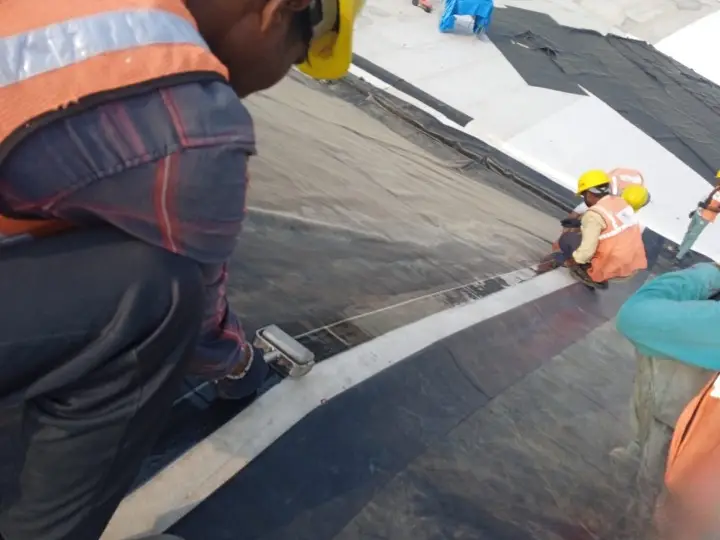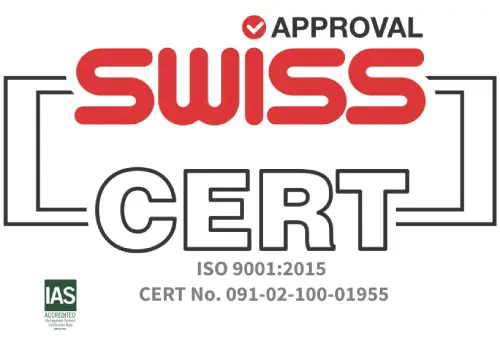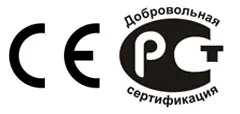2025

Why Polygomma EPDM Membranes Are the Best Choice for Commercial Roofing
When it comes to commercial roofing, businesses need a roofing material that’s strong, affordable, and built to last. It should handle tough weather, stay low on maintenance, and offer reliable protection year after year. That’s exactly why EPDM membranes have become a preferred choice for commercial buildings.
In this blog, we’ll explore what makes EPDM membranes such a smart pick—from their weather resistance and energy-saving benefits to their long-lasting and eco-friendly features.
Understanding EPDM Membranes in Commercial Roofing
EPDM (Ethylene Propylene Diene Monomer) roofing membranes are extremely flexible and durable synthetic rubber roofing products. They are mostly employed on flat and low-slope commercial building roofs, where water drainage and load capacity are major factors. EPDM membranes have a variety of thicknesses to suit individual roofing requirements.
The most important attribute of these membranes is that they are weatherproof and UV-resistant, making them the best option for varied geography. Their high-quality chemical composition guarantees longevity, resistance to wear and tear, chemical exposure, and low maintenance in the long term. These membranes are also resistant to ozone, air pollutants, and root penetration—making them highly versatile across applications.
They are extremely lightweight, approximately 1.25 Kgs/SQM, and offer excellent performance across a wide range of temperatures, from -40°C to +160°C. No flames or torches are required during application, ensuring a flame-free, heat-free, and safer installation process. Additionally, EPDM is an environmentally responsible choice, being fully recyclable at the end of its service life.
1. Exceptional Durability and Longevity
One of the major advantages of this roofing material is that it is very durable. It is made to last for decades—nearly millions of square meters of EPDM membranes have been installed globally with a proven service life of beyond 25 years.
Compared to traditional materials that lose their strength over time when subjected to sunlight, heavy rains, or snow, it retains its physical and chemical properties. Its high resistance to UV light, ozone, and air pollutants makes it especially suitable for commercial roofs. It provides durable protection without needing to be replaced often, which can benefit companies seeking a long-lasting roofing system.
2. Superior Weather Resistance
Commercial buildings are continuously exposed to various weather conditions, from scorching summers to freezing winters. This roofing material is designed to withstand extreme temperature fluctuations without becoming brittle or losing flexibility. Its ability to expand and contract with changing temperatures prevents cracks and leaks, reducing maintenance issues.
Also, it possesses excellent waterproofing properties. Penetration of water is among the largest concerns for commercial roofs, leading to costly damage and repairs. The material creates a watertight seal that can’t leak, ensuring that the interior of commercial buildings remains dry and damage-free.
3. Cost-Effective Roofing Solution
For business owners, the cost is an important factor in choosing a roofing material. This option offers a highly cost-effective solution in multiple ways:
- Lower Installation Costs: Compared to other commercial roofing materials, it is easier and quicker to install, especially because no torches or flames are required. The flame-free and heat-free application improves safety and lowers installation costs.
- Minimal Maintenance Expenses: Its resilience to environmental factors, pollutants, and chemical exposure means fewer repairs and maintenance needs over the years.
- Long-Term Investment: With a lifespan of beyond 25 years, businesses save money on premature roof replacements, making it a smart financial choice.
The affordability of this material, combined with its long-term benefits and eco-friendly nature, makes it an attractive option for commercial property owners seeking value for money.
4. Energy Efficiency and Sustainability
Sustainability is a growing concern in business construction, and this product makes a valuable contribution to energy efficiency. Its thermal characteristics help control indoor temperatures and lower heating and cooling bills. This insulating role minimises energy usage, resulting in lower carbon emissions and energy bills. As a recyclable roofing system, EPDM also aligns with green building practices and contributes to the reduction of construction-related waste.
5. Ease of Installation and Maintenance
Unlike some roofing materials that require complex installation procedures, this option offers a hassle-free application process. Installation methods include:
- Fully Adhered: Using adhesives to attach the membrane directly to the substrate.
- Mechanically Fastened: Secured with fasteners for high strength and stability.
- Ballasted: Held in place with gravel or pavers, ideal for large commercial roofs.
The flame-free and heat-free installation process ensures safety, reduces downtime, and minimises business disruptions. Additionally, these roofs require low maintenance. Routine inspections and occasional cleaning can extend their lifespan, ensuring continued performance with minimal effort.
6. Fire Resistance and Safety
Fire safety is a crucial consideration in commercial buildings, and EPDM membranes offer better fire-resistant capabilities. Special grades of EPDM membranes are manufactured with fire-retardant properties, complying with industrial standards to offer increased protection for commercial purposes.
By using fire-resistant roofing materials, companies can safeguard their properties, employees, and assets from possible fire risks. Adherence to fire safety codes also provides a secondary security benefit for commercial structures.
7. Versatility in Application
Every commercial building has unique structural and design requirements. These membranes offer versatility in applications, making them suitable for:
- Flat and low-slope roofs: Where proper water drainage and flexible protection are critical.
- New construction and roof replacements: EPDM membranes work equally well for both new commercial developments and refurbishing older buildings.
- Large commercial spaces, warehouses, and industrial buildings: Their chemical resistance and durability under heavy-duty use make them ideal for high-impact areas.
- Green roofs and landscaped terraces: Thanks to their anti-root penetration properties, EPDM membranes serve as natural root barriers, preventing plant growth from damaging the waterproof layer. This makes them a go-to solution for terrace gardening, podium landscaping, and eco-conscious urban green spaces.
Their ability to adapt to various roofing structures and configurations makes them a flexible choice for different types of commercial properties. Whether a business is upgrading an existing roof or constructing a new one, it offers reliable performance and longevity.
8. Resistance to Chemical Damage
Commercial and industrial structures frequently experience exposure to pollutants, chemicals, and contaminants that can cause damage to roof material. The membranes of EPDM are chemically resistant, making them suited for buildings where everyday exposure to industrial corrosive waste or emissions occurs.
9. Enhanced Waterproofing Capabilities
Water damage is one of the most common and costly issues for commercial properties. This roofing solution provides superior waterproofing capabilities, ensuring that moisture does not seep into the building.
Its seamless and watertight installation eliminates weak points where leaks could develop, offering comprehensive protection against rain, snow, and standing water. This makes it an ideal solution for commercial buildings in regions prone to heavy rainfall or moisture buildup.
10. Strong, Safe, and Eco-Friendly
Sustainability is becoming an important factor in commercial construction, and this material aligns with green building initiatives. It has a lower environmental impact compared to traditional roofing materials due to its:
- Recyclability: It can be recycled at the end of its lifespan, reducing landfill waste.
- Energy efficiency: Lower heating and cooling costs contribute to reduced carbon emissions.
- Longevity: A longer lifespan means fewer replacements, minimising material waste and contributing to reduced resource consumption.
Businesses prioritising eco-friendly, recyclable, and energy-conscious building materials can benefit from the environmental advantages offered by this roofing solution.
Key takeaways
- Proven Durability: EPDM membranes offer long-term resilience against UV rays, chemicals, and extreme temperature fluctuations.
- Weatherproof and Energy-Efficient: Designed to withstand harsh climates while contributing to energy-conscious building solutions.
- Safe and Simple Installation: Installed without flames or heavy equipment, ensuring minimal disruption and improved on-site safety.
- Eco-Friendly: Recyclable and anti-root properties make EPDM suitable for green buildings and rooftop gardens.
- Global Track Record: With millions of square metres in use, EPDM membranes have consistently delivered decades of reliable performance.
- Smart Investment: An ideal choice for property owners seeking a practical, sustainable, and dependable roofing solution.

